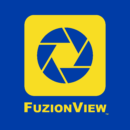Background
In 2017, representatives of Gopher State One Call (GSOC) reached out to the leadership of Emergency Preparedness Committee of the Minnesota Geospatial Advisory Council (EPC) in hopes of learning what could potentially be done to improve the use of geospatial technology in the underground utility community. From ensuing discussions over the next three years, the Underground Utilities Mapping Project Team (UUMPT) came into existence under the auspices of the EPC in early 2020. Now comprised of over 25 individuals from various sectors of the underground Facility Operator (FO) community, since mid-2021 the UUMPT has been championing development of software called "FuzionView". In October 2022, a FuzionView prototype successfully demonstrated the ability to pull together an on-the-fly, web-mapped view, of all utility infrastructure within a designated dig area. This was a first in the nation achievement.
In 2023, GSOC hired Minnesota geospatial research and development nonprofit SharedGeo to develop a production version of FuzionView which will be used across Minnesota and released as Open Source software. Together, these project partners, as well as others who are joining the effort, are working to leverage 50-years of advancements in geospatial technologies that have been previously under-utilized in the underground utility community.

Why FuzionView?
- There is no comprehensive or accurate understanding of the infrastructure that is buried in Minnesota or anywhere else in the nation,
- Technology for locating buried infrastructure ("Call Before You Dig") has gone largely unchanged for nearly 50 years,
- Every year, more and more infrastructure is being placed underground,
- Every year, the need to locate this buried infrastructure prior to construction is increasing - it is not uncommon for locate requests in Minnesota to exceed 7,000 in a day,
- In 2021, Minnesota had over 2,200 unintentional hits on underground infrastructure - many of these were on gas lines,
- Without working toward a viable solution for having the mapped location of Minnesota's underground infrastructure, there will be no opportunity in the future to leverage substantial safety and cost saving technologies such as GPS enabled locating equipment and Augmented Reality, and
- Both the U.S. Congress and the Common Ground Alliance have identified the introduction of state-of-the-art geospatial technologies into the buried infrastructure community as a top safety priority.




